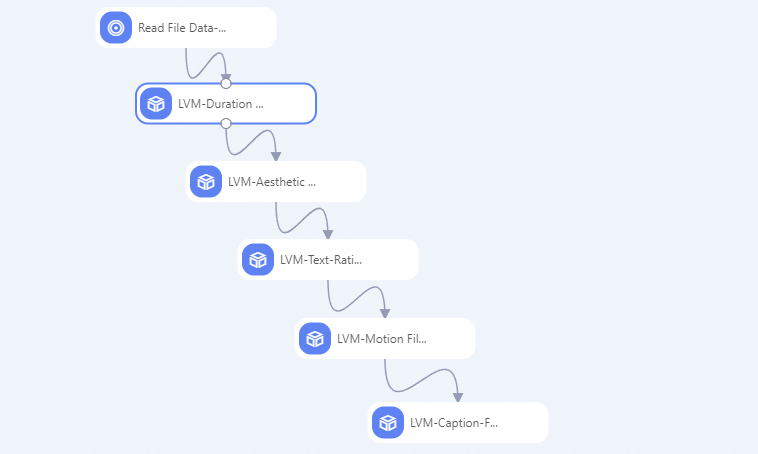Machine Learning Designer of Platform for AI (PAI) provides a variety of large vision model (LVM) algorithm components to help you easily process video tasks, such as video data cleaning, content filtering, basic information extraction, classification, and captioning. You can combine different algorithm components to filter high-quality video data and generate video captions. The data can be used to train generative video models. This topic describes how to use the preset template provided by Machine Learning Designer for video data filtering and labeling.
Limits
The preset template for video data filtering and labeling is available only in the China (Hangzhou), China (Shanghai), China (Beijing), and China (Shenzhen) regions.
Prepare video data
Upload a video file to an Object Storage Service (OSS) bucket. The file must meet the following requirements:
The file is in the MP4 format.
The file name does not contain Chinese characters.
Create and run a pipeline
Go to the Visualized Modeling (Designer) page.
Log on to the PAI console.
In the upper-left corner, select a region based on your business requirements.
In the left-side navigation pane, click Workspaces. On the Workspaces page, click the name of the workspace that you want to use.
In the workspace, choose Model Training > Visualized Modeling (Designer) in the left-side navigation pane.
Create a pipeline.
On the Visualized Modeling (Designer) page, click the Preset Templates tab, select Business Area from the drop-down list, click the Video tab, and then click Create in the Video Data Filtering and Labeling card to create a pipeline.

Configure the pipeline parameters. You can retain the default values. Then, click OK.
Click the Pipelines tab. In the pipeline list, click the pipeline that you created and then click Open.
Configure the pipeline.

In the right-side panel, configure the parameters of the following components:
Read File Data component: Set the OSS Data Path parameter to the directory that you specified when you uploaded the video file to the OSS bucket. For more information, see the "Prepare video data" section of this topic.
LVM algorithm component: For information about how to configure large vision model (LVM) algorithm components, see Video preprocessing operators.
Run the pipeline. After the pipeline is run, you can view the following generated files:
The video metadata file named video_meta.jsonl is generated in the upper-level directory of the path specified by the Video Data OSS Path parameter.
The output files are generated in the path specified by the Output File OSS Path parameter.
For more information about the output files, see the description of parameters in the "Output file OSS path" section in the Video preprocessing operators topic.